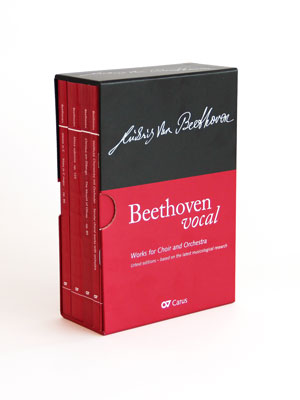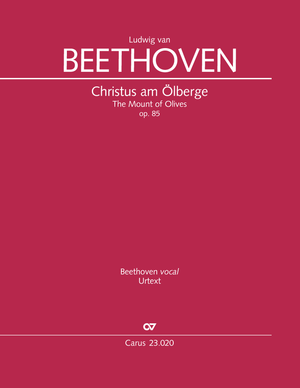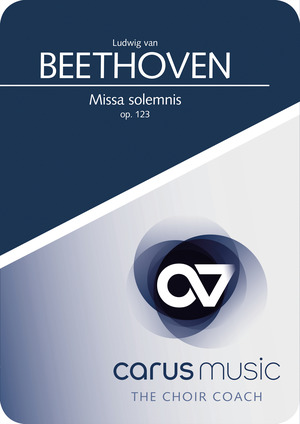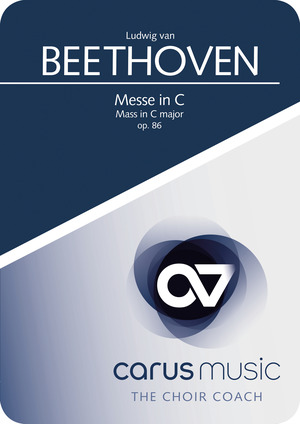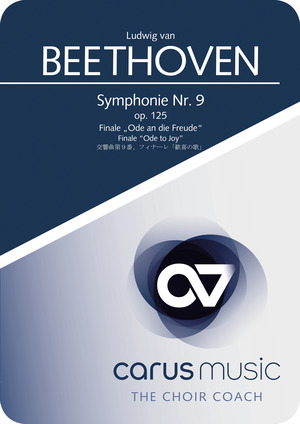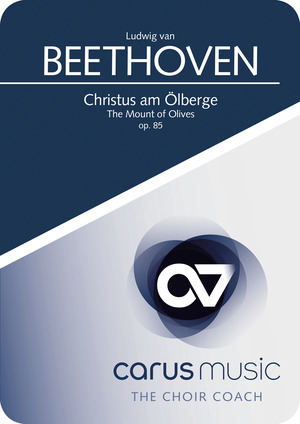
Dans Christus am Ölberge (Le Christ au Mont des Oliviers), son oratorio pour la Passion, Beethoven réussit à s’inscrire dans la continuité d’une tradition du XVIIIe siècle, mais aussi à marquer l’éclosion de l’oratorio en allemand de son style personnel. Il se base sur l’opéra de l’époque pour composer. Le Christus am Ölberge n’est donc pas tant caractérisé par le recueillement religieux que par la transposition dramatique d’une situation spécifique de la Passion dans des scènes musicales d’une grande profondeur.
L’expérience du chœur avec les Passions de Bach sera donc utile seulement dans une certaine mesure : à la place des chorals, on trouve ici les chœurs des guerriers et des disciples qui interagissent dans une scène dramatique, plus tard le chœur des anges qui jubilent, et le texte aussi est nouveau – à vos partitions, la tâche est d’ampleur.
Il suffit de s'exercer. Partout. A tout moment.
Que ce soit à la maison sur votre tablette ou votre PC ou en déplacement sur votre smartphone : avec carus music, the Choir Coach, vous avez toujours vos œuvres chorales avec vous pour vous entraîner ! Avec l'application chorale de carus music, vous pouvez écouter votre partition ainsi qu'un enregistrement de première qualité sur n'importe quel appareil et vous entraîner facilement à votre propre partie de chœur avec un coach. Avec carus music, la préparation de vos concerts est facile, efficace et amusante à maîtriser !
Interprètes: Maria Venuti (soprano), Keith Lewis (tenore), Michel Brodard (basso) – Gaechinger Cantorey Stuttgart, Bach-Collegium Stuttgart – Helmuth Rilling
-
Compositeur
Ludwig van Beethoven
| 1770-1827Ludwig van Beethoven est assurément un des compositeurs les plus influents dans l’histoire de la musique. Son œuvre constitue le sommet de nombreux genres du classicisme viennois, surtout instrumentaux, et servira de fondement pour les prochaines décennies. Mais les pièces vocales de Beethoven établissent aussi de nouveaux critères. La tardive Missa Solemnis fait partie des œuvres chorales les plus impressionnantes de son époque; mais sa Messe in C exploite déjà de nouvelles dimensions expressives du texte liturgique, qui ont servi de référence pour l’évolution ultérieure de la composition des messes. Et avec le chœur final de la Symphonie n° 9, la mise en musique de l’Ode à la Joie de Schiller, Beethoven a écrit l’une des pièces vocales les plus jouées et les plus célèbres dans le monde entier, et s’est ainsi érigé à soi-même un monument musical intemporel. Plus d'information sur la personne
-
Parolier/Librettiste
Franz Xaver Huber
| 1755-1814
-
Traducteur
John Troutbeck
| 1832-1899
-
Ensemble
Gächinger Kantorei Stuttgart
Since August 2013, the Gächinger Kantorei Stuttgart has been under the artistic direction of Hans-Christoph Rademann, the director of the Internationale Bachakademie Stuttgart. Under the patronage of the Bachakademie, the choir plays a decisive role in a wide range of concerts, guest performances and recordings for both radio and CD. The center of the choir’s activities consists, in addition to its manifold activities in the MUSI KFEST UTT GART , of a large concert series with oratorio programs ranging from Schütz to commissioned contemporary works. The interpretation of vocal works by Johann Sebastian Bach has always been a special focus of the choir. The Gächinger Kantorei Stuttgart, which is named after a small village in the Swabian Alb and was founded by Helmuth Rilling in 1954, has ranked as one of the outstanding concert choirs of the world for decades. In addition to regular performances with its partner ensemble, the Bach-Collegium Stuttgart, the choir frequently works together with orchestras such as the Vienna Philharmonic, the New York Philharmonic and the Israel Philharmonic. It also has a particularly close relationship with the Stuttgart Radio Symphony Orchestra of the SWR. The choir is regularly conducted by guest conductors such as Masaaki Suzuki, Krzysztof Penderecki, Alexander Liebreich and Sir Roger Norrington. Guest performances have led the ensemble to, among others, China and Latin America, as well as to the large festivals Salzburg, Lucerne, Prague, New York, Paris, London, Vienna and Seoul. The choir has recorded hundreds of CDs which include Bach’s complete vocal works, diverse 18th century oratorios as well as several world premieres including works by Penderecki, Pärt and Rihm. Plus d'information sur la personne
-
Ensemble
Bach-Collegium Stuttgart
-
Chef d'orchestre
Helmuth Rilling
| 1933
Questions fréquentes sur l'œuvre
 Il n'y a pas encore de questions et réponses concernant cette œuvre ou vous n'avez pas trouvé la réponse à votre question sur l'œuvre ? Cliquez ici et envoyez votre question spécifique à notre service clients.
Il n'y a pas encore de questions et réponses concernant cette œuvre ou vous n'avez pas trouvé la réponse à votre question sur l'œuvre ? Cliquez ici et envoyez votre question spécifique à notre service clients.


